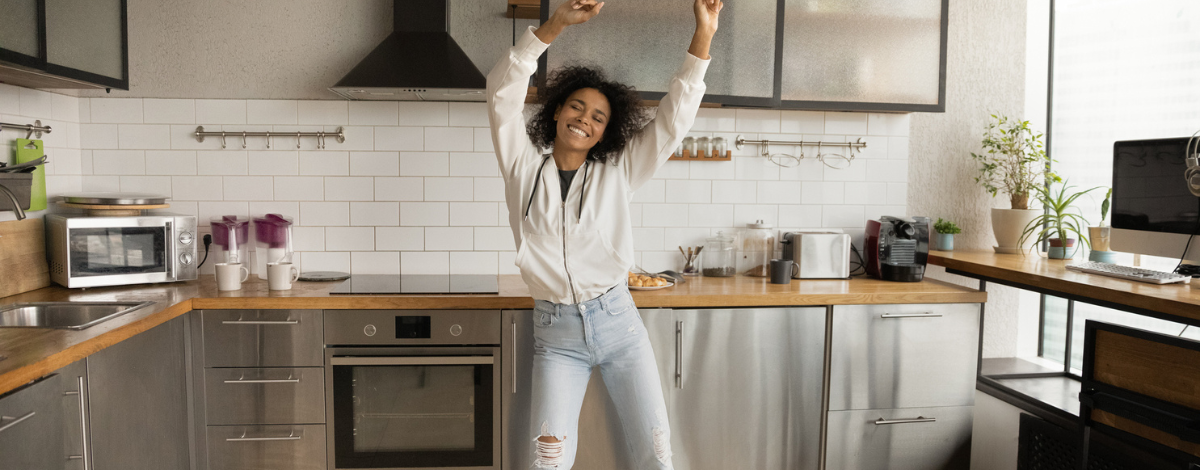Is a HELOC Right for Me? The Most Common Questions
Last Updated: April 7, 2023

As a community bank, we are dedicated to helping our clients find options that suit their unique needs and financial situations. For homeowners that need access to funds for education, home repairs, debt consolidation, or other large expenses a home equity line of credit (HELOC) can be a great option. Oftentimes, people are unsure how a HELOC works, and they question whether it is a good choice for them.
We have compiled a list of the most common questions surrounding HELOCs so you can decide if one might be a good option for you.
What is a HELOC?
A HELOC is a revolving line of credit that allows you to borrow against the equity in your home. It's like a credit card, but instead of borrowing against your credit limit, you're borrowing against the value of your home.
How does a HELOC work?
Once your limit is approved, you can borrow as much or as little as you need. Interest only accrues against the amount you borrowed. As you pay it back, you have more money available again. Just like a credit card, you can pay off your HELOC in full at any time.
If you pay off your HELOC and there’s a zero balance, you don’t have to make payments on it again until the next time you draw money. And it doesn’t matter what the minimum payment is, you can always choose to pay more. Keep in mind that some HELOCs require you to carry a minimum balance – make sure you know the guidelines of your HELOC before getting started.
What can I use a HELOC for?
HELOCs can be used for many things. Some of the most common uses include home renovations, education expenses, debt consolidation, and automobiles. It is important to remember that the fund should be used responsibly because you are borrowing against your home’s value.
What are the benefits of a HELOC?
One of the largest benefits of HELOC is the flexibility that they have. The funds can be used for a variety of purposes and you only pay interest on the amount you borrow.
Additionally, since your credit line is secured by your home, the interest rate on a HELOC is generally lower than you will get with an unsecured credit card. This makes it a great option for consolidating debt.
Another bonus of a HELOC is that once you are approved, the funds will be available to you for a set time period called the draw period (typically around 10 years). Once the draw period ends, you have a repayment period to pay off the loan that can sometimes be up to 20 years.
If you have a major house repair or issue that arises, you can get the funds immediately if you have already been approved for a HELOC. When it comes to home renovations, especially since those will most likely add value to your home, a HELOC can be the best funding option. Using the funds wisely can actually help you to make money on your home.
What are the risks of a HELOC?
The biggest risk of a HELOC is that because you are borrowing against your home, not making the payments can result in you losing your home. Additionally, similar to other loans, if you do not pay back the loan according to the terms, your credit score can be impacted negatively.
Alternatively, if you are making payments on time your credit score can increase. Either way, as long as you are making your payments on time and keeping up with the terms of the loan, you should be able to pay your HELOC off without any issues.
How do I qualify for a HELOC?
To qualify for a HELOC, you will need to have a certain amount of equity in your home, typically between 15%-20%. Other factors that are looked at include your credit score, income, and debt-to-income ratio.
How much can I borrow with a HELOC?
The amount you can borrow varies with the amount of equity in your home. Use our credit line calculator, to get an idea of how much you might be able to borrow.
Is HELOC like a second mortgage?
Sometimes a HELOC is compared to a second mortgage because they both borrow against the equity in your home. However, there are some key differences in that a second mortgage often involves borrowing a lump sum of money that is paid back over a fixed term and interest rate. In contrast, a HELOC is a revolving line of credit that you can draw from as needed, typically with a variable interest rate.
Are there fees with a HELOC?
It is important to note that sometimes there are costs involved in obtaining a HELOC. At Centier we offer a no closing costs HELOC, visit our HELOC page for more information about the types of HELOC’s we offer.
We can show you how to leverage your home’s established equity – contact us today to get expert advice every step of the way, from application through closing!

